Stable isotopes
Type of resources
Topics
Keywords
Contact for the resource
Provided by
Years
Formats
Representation types
Update frequencies
Scale
-
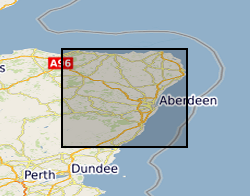
The database contains a range of geochemical data for metamorphosed limestones from the Dalradian of Scotland and Northern Ireland. The data include a) whole-rock geochemical analyses by XRF (X-Ray Fluorescence) for major oxides and a range of trace elements for several hundred samples, b) a number of whole-carbonate O (oxygen) and C (carbon) stable isotope and Sr (strontium) data, c) electron microprobe mineral data on carbonates and calc-silicate minerals and d) ion-probe O stable isotope and mineral trace element data for calcites in a small number of samples. The samples from which the data have been derived were collected from a wide range of outcrops within the Scottish and Irish Dalradian, mainly concentrated in the North East Grampian Highlands of Scotland. The data have been collected mainly to support the mapping and scientific work being undertaken in the Grampian Highlands by BGS since the early 1980s. The database includes some data from the literature. All samples are located by British National Grid coordinates to the nearest 10m or better. The isotope data were acquired as part of a PhD study by C W Thomas in the late 1990s. The database is not currently being added to, but is still being used in various studies. The combined data provide wide-ranging insights into marine chemistry contemporary with deposition of the limestones and the way in which this chemistry changed with time during the Neoproterozoic, and they elucidate subsequent effects of diagenesis and metamorphism and the outcrop and grain-scale. The data set is largely complete with regard to geochemical data, but still requires some editing to bring all fields up to date, particularly with regard to lithostratigraphical assignation. The data are currently held in MS Access tables and can conveniently be displayed via GIS or abstracted in tabular form and used in spreadsheets, statistical analysis and graphing software.
-
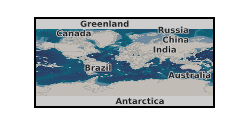
This dataset comprises raw carbon, oxygen and hydrogen stable isotope data on water (precipitation and terrestrial) and plant cellulose from Empodisma-dominated peatlands throughout New Zealand. This data has been published in two open access papers: Amesbury, M. J., Charman, D. J., Newnham, R. M., Loader, N. J., Goodrich, J. P., Royles, J., Campbell, D. I., Roland, T. P. and Gallego-Sala, A. V. 2015. Carbon stable isotopes as a palaeoclimate proxy in vascular plant dominated peatlands. Geochimica et Cosmochimica Acta 164, 161-174. Amesbury, M. J., Charman, D. J., Newnham, R. M., Loader, N. J., Goodrich, J. P., Royles, J., Campbell, D. I., Keller, E. D., Baisden, W. T., Roland, T. P. and Gallego-Sala, A. V. 2015. Can oxygen stable isotopes be used to track precipitation moisture source in vascular plant dominated peatlands? Earth and Planetary Science Letters 430, 149-159.
-
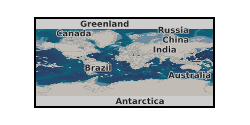
This dataset contains the low-resolution isotopic data (O & C) covering the last 1Ma, which is used to establish a more precise glacial-interglacial stratigraphy than the shipboard bio/paleomagneto stratigraphy for 2 NW Pacific Sites (IODP EXP350 1436C and 1437B) both were recovered at intermediate depths. The planktonic foraminifera census counts are used to assess the changes in surface water in the area affected by the Kuroshio Current. They are also used in concert with other sedimentological, micropaleontological or taphonomical evidences to estimate the changes in carbonate preservation at intermediate water depth in relation to changes in global ocean circulation during glacial interglacial cycles. Data report: Pleistocene planktonic foraminiferal oxygen and carbon stable isotope records and their use to improve the age model of Hole U1436C ores recovered east of the Aogashima Volcano, Maryline J. Vautravers
-

The dataset worksheet contains a list of core samples taken during IODP Exp 350 and foraminifera-based data for selected samples. The work was started with the aim of reconstructing palaeoproductivity changes (namely surface-to-deep carbon isotope gradients and U/Ca measurements) over tephra layers in order to test the ‘ash fertilisation hypothesis’. However, the work has been temporarily halted given the on-board volcanologists ongoing concerns that the ash layers in the selected cores have been reworked and therefore are not primary. Because of the induration and silicification of the core samples at quite shallow depths in the core, the other aim of the project (to reconstruct palaeoceanographic changes from 16-0 Ma) was not possible. The spreadsheet contains a full list of samples and a list of samples that have been examined and analysed. The data worksheet contains the no. of Globigerinoides ruber (with weight), Oridorsalis umbonatus, Uvigerina spp. and Cibicidoides spp. specimens for specific samples. For selected samples, stable oxygen and carbon isotopes are given and a graph of the carbon isotopes vs depth in core is presented.
-
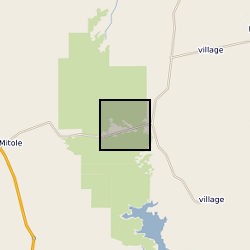
Data from Tanzania Drilling Project Core Site 14 B. Data spans the Paleocene Eocene Thermal Maximum ~56 million years ago. Data includes: bulk sediment geochemistry, BIT index and GDGT data, n-alkane d13C data, single specimen planktonic foraminifera stable isotope data and planktonic foraminifera count data. Geographic location 9°16'59.89"S, 39°30'45.04"E
-
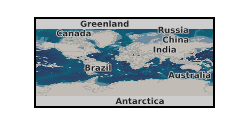
Data derived from NERC Grant NE/N001621/1. Geographical Area - DSDP/ODP/IODP Sites 516, 1138, 925, 242, 1338, 871, 872
-
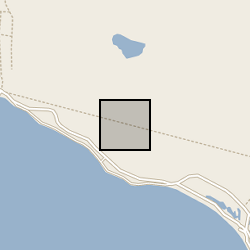
The dataset contains oxygen and carbon isotope measurements from multiple-shell samples of the ostracod Heterocypris punctata, from Core FP2 taken from Freshwater Pond, Barbuda. A chronology for the core is provided by radiocarbon dates. The data, which are further described in Burn et al. (2016) The Holocene, 26(8), 1237-47, provide a proxy for changing rainfall patterns for the period 2000-1555 CE.
-

Nannofossil biostratigraphy, 46x stable bulk carbonate stable isotope measurements (oxygen and carbon) and 71x % organic carbon and % carbonate measurements from between 1313.71 and 1326.82 mbsf at IODP Site U1480.
-

Benthic stable isotope (carbon and oxygen) data from IODP Site U1445. Generated by Yasmin Bokhari-Friberg, supervisied by Kate Littler and Pallavi Anand.
-

Carbon and oxygen isotopic composition of planktic foraminifera spanning the early and middle Eocene succession recovered from borehole 16/28-Sb01. For description of this sedimentary sequence see Haughton et al. 2005. Petroleum Geology: North-West Europe and Global Perspectives, Proceedings of the 6th Petroleum Geology Conference, 1077–1094.
 BGS Data Catalogue
BGS Data Catalogue